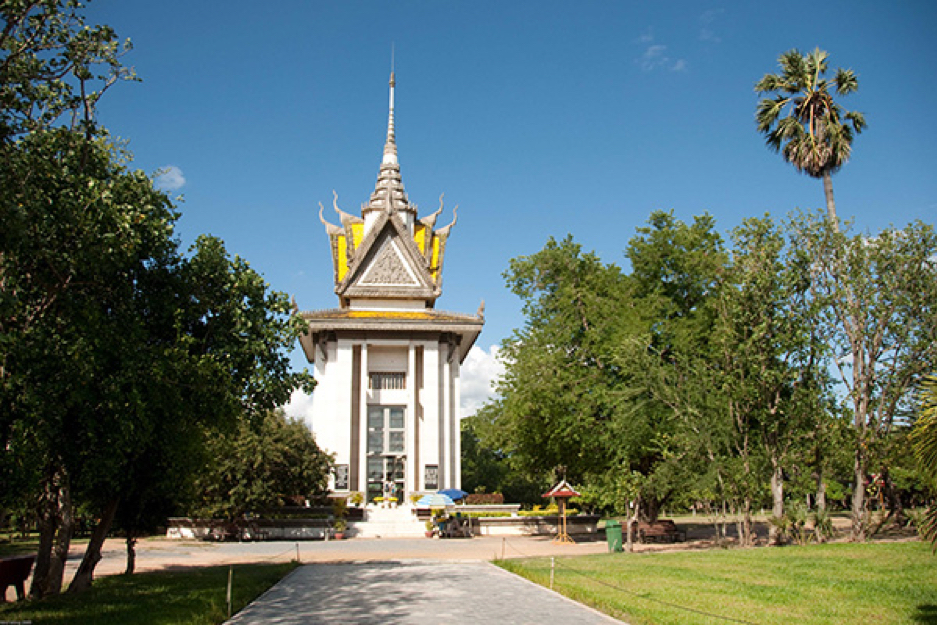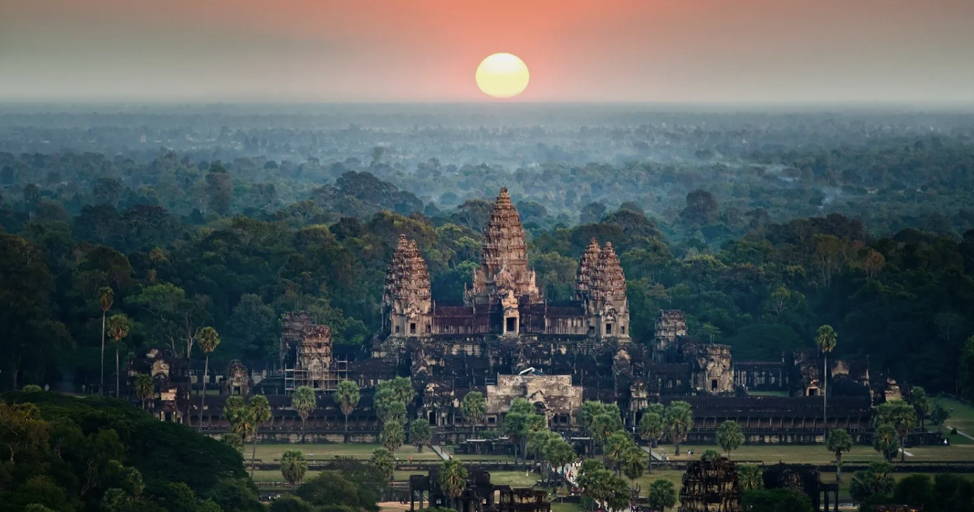Top Historical Places in Cambodia
Cambodia is a country with a rich and diverse history, spanning from the ancient Khmer Empire to the modern era of independence and development. For travellers who are interested in exploring the cultural and natural heritage of this Southeast Asian nation, there are many historical places to visit and learn from.
Visiting these places can help travellers gain a deeper understanding and appreciation of Cambodian history, heritage, and people. Here are some of the most notable ones:
Tuol Sleng Genocide Museum
This is a former high school that was converted into a prison and torture center by the Khmer Rouge regime, which ruled Cambodia from 1975 to 1979. More than 17,000 people were detained, interrogated, and killed at Tuol Sleng, also known as S-21.
The museum displays the photographs, documents, and belongings of some of the victims, as well as the cells, instruments, and methods of torture used by the Khmer Rouge. The museum is a sobering reminder of the atrocities committed by the regime and a tribute to the resilience and courage of the survivors.
Preah Vihear Temple
This is an ancient Hindu temple located on a cliff near the border between Cambodia and Thailand. The temple was built between the 9th and 12th centuries by several Khmer kings and was dedicated to Shiva. The temple complex consists of several sanctuaries, staircases, terraces, and carvings along an 800-meter-long axis that follows the natural contours of the mountain.
The temple offers stunning views of the surrounding landscape and showcases the architectural and artistic achievements of the Khmer civilization. The temple is also a source of dispute between Cambodia and Thailand, who both claim sovereignty over it. The temple is a UNESCO World Heritage Site since 2008.
Sambor Prei Kuk
If you are interested in exploring ancient Cambodian history and culture, you might want to visit Sambor Prei Kuk, a remarkable archaeological site that reveals the origins of the Khmer civilization. Sambor Prei Kuk was once the capital of the Chenla Kingdom, a powerful state that ruled over much of Southeast Asia from the 6th to the 9th century. The Chenla Kingdom was the predecessor of the Khmer Empire, which built the famous Angkor Wat and other monuments.
Sambor Prei Kuk consists of more than 100 brick temples that are scattered across a large area of forest and wetlands. The temples have a unique octagonal shape and are decorated with intricate carvings of gods, animals, and floral patterns.
The temples are also adorned with lintels, which are horizontal beams that span the doorways and windows. The lintels are carved with scenes from Hindu mythology, such as the churning of the ocean of milk, the battle between Rama and Ravana, and the life of Krishna.
The temples of Sambor Prei Kuk are among the oldest examples of Khmer architecture and art, and they show the influence of Indian culture on the region. The site also reflects the religious diversity of the Chenla Kingdom, as some temples are dedicated to Shiva, some to Vishnu, and some to Buddha.
The site was abandoned in the 9th century when the Khmer Empire moved its capital to Angkor. It was rediscovered by French explorers in the 19th century and was declared a UNESCO World Heritage Site in 2018.
Sambor Prei Kuk is a hidden gem that offers a glimpse into a long-lost civilization that shaped the destiny of Cambodia and Southeast Asia. It is a must-see destination for anyone who loves history, culture, and nature.
READ MORE:
Cambodia has a lot to present, which involves tropical coastlines, imperial structures, and a variety of environmental attractions. Read more at Top Cambodian Tourist Spots.
Choeung Ek Killing Fields

The Choeung Ek Killing Fields in Cambodia is a former orchard that served a sinister purpose during the reign of the Khmer Rouge. From 1975, when they came to power led by the infamous Pol Pot, this communist regime carried out a campaign of mass genocide.
Victims were taken to sites known as the Killing Fields, where they were killed and buried in mass graves.
One of the most notorious Killing Fields is Choeung Ek, located about 17 kilometres south of the capital Phnom Penh. It is estimated that more than 20,000 people were killed and buried at Choeung Ek between 1975 and 1979. Many of them were former political prisoners who were tortured at the Tuol Sleng prison before being transported to Choeung Ek.
Choeung Ek is a memorial site, filled with more than 5,000 human skulls. Some of the lower levels are opened during the day so that the skulls can be seen directly. Many have been shattered or smashed in. Visitors can also see the pits from which the bodies were exhumed and the bones that still litter the site.
Choeung Ek is a grim reminder of the atrocities committed by the Khmer Rouge and a place of mourning and reflection for the Cambodian people and the world.
Angkor Wat

This is the most famous and iconic historical site in Cambodia, and one of the largest and best-preserved religious monuments in the world. Built-in the 12th century by King Suryavarman II, Angkor Wat was originally a Hindu temple dedicated to Vishnu, but later became a Buddhist shrine.
The temple complex covers an area of about 200 hectares and consists of five towers, numerous galleries, courtyards, libraries, and bas-reliefs depicting scenes from Hindu mythology and Khmer history. Angkor Wat is a UNESCO World Heritage Site and a symbol of Cambodian history and national identity.
Bokor Hill Station
If you are looking for a unique and adventurous destination in Cambodia, you might want to consider visiting Bokor Hill Station. This is a complex of buildings that was built by the French colonialists in the early 20th century as a resort and a retreat from the heat and humidity of Phnom Penh. The construction of the station took nine months and involved the labor of thousands of Cambodians, many of whom died from malaria, accidents, or exhaustion.
The station was completed in 1925 and consisted of a hotel, a casino, a church, a post office, and several royal residences. It was a popular spot for the French elite and the Cambodian royalty, who enjoyed the cool climate and the panoramic views of the coast and the mountains. The station also had its own power plant, water supply, and radio station.
However, the station was not destined to last long. It was abandoned twice in its history: first during the Indochina War in the 1940s, when the Viet Minh attacked it; and second during the Khmer Rouge regime in the 1970s, when it became a battleground between the communists and the loyalists. The station was left in ruins, with bullet holes, graffiti, and decay marking its walls.
The station itself is a historical monument that reflects Cambodian history and culture. It is a place where you can feel the ghosts of the past and imagine what life was like for those who lived there.
You can also admire the architecture and the design of the buildings, which blend French and Khmer styles. The station is especially eerie and atmospheric when it is covered by fog or mist, which happens often due to its high altitude.
However, if you want to visit Bokor Hill Station, you should do it soon. The station is currently undergoing a controversial redevelopment project that aims to transform it into a modern resort with hotels, casinos, golf courses, and shopping malls.
Many people oppose this project because they think it will destroy the historical and natural value of the station. They argue that the station should be preserved as it is or restored to its original state.
If you are interested in visiting Bokor Hill Station, you will need to travel about 42 kilometers from Kampot, a charming town that is becoming a popular tourist destination in Cambodia. The road to the station is not very good and can be challenging to navigate.
You will also need to pay an entrance fee to enter the national park. However, if you are looking for an adventure and a glimpse into Cambodian history, Bokor Hill Station is definitely worth it.
READ MORE:
The museums, palaces, pagodas, and markets provide a look into Cambodia's history and culture. Bars, restaurants, and clubs make up its vibrant nightlife. These are only a few of the major towns that contribute to making Cambodia an interesting and varied place to travel. Here is an overview of the most famous cities in Cambodia to visit.
Cambodia Visa Online is an online travel permit to visit Cambodia for tourism or commercial purposes. International visitors must have a Cambodia e-Visa to be able to visit Cambodia. Foreign citizens can apply for an Cambodia e-Visa Application in a matter of minutes.
Polish citizens, Russian citizens, French citizens and Italian citizens are eligible to apply online for Online Cambodia Visa.